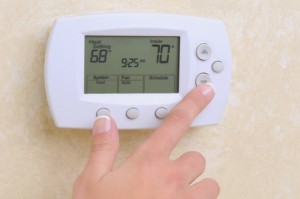 Programmed for Savings
Programmed for Savings
Programmable thermostats were designed to make it more convenient for efficiency-minded homeowners to save energy. The intention is to program the thermostat to increase or decrease indoor temperature based on household occupancy, comfort temperatures and energy-saving temperatures.
Following is a sample energy-saving program for the heating and cooling respectively:
- Sleep - Program back/up 4 to 7 degrees for 8 hours.
- Early morning - Program normal comfort temperature.
- Work - Program back/up 10 to 15 degrees for 8 to 10 hours.
- Evening - Program normal comfort temperature.
Consistency Is Important
All programmable thermostats offer a "hold" or "override" button that temporarily pauses the current program and allows the homeowner to manually change the temperature. If you find someone in your household is using this feature too much, adjust the program settings to better reflect your comfort level. It’s better to save some level of energy than lose all savings by using "hold" or "override" too often.
Zoning Systems
Zoning systems are trending across the country. They allow you to condition only occupied rooms, or "zones," if desired. If you have or are going to install a zoning system, make sure to install a programmable thermostat or linked temperature sensor for each zone.
Thermostat Installation Tips
If you’re installing a new programmable thermostat, use these tips:
- During installation, avoid direct sunlight, exterior doors and direct airflow from registers and return grills.
- Locate the thermostat on an interior wall in a central area.
- The programmable thermostat should be about five feet off the floor.
- Make sure you select a model that's compatible with your heating and cooling systems.
For more programmable thermostat tips, please contact Rodenhiser Plumbing, Heating & Air Conditioning. We’ve provided exceptional service to homeowners in Route 495/128 area of Massachusetts for more than 80 years.
Image via Shutterstock.com